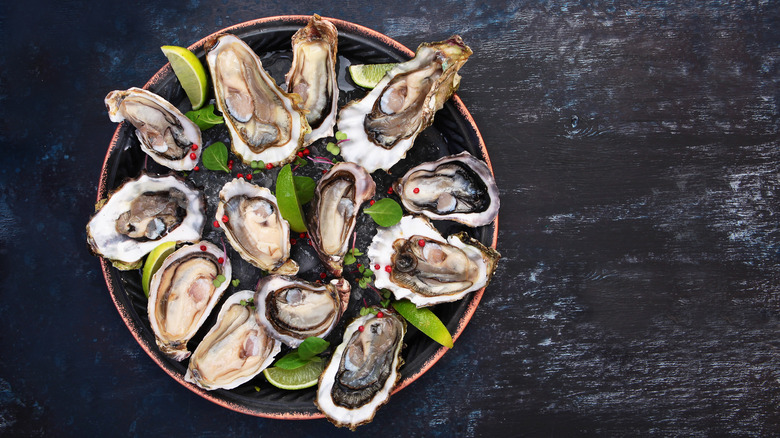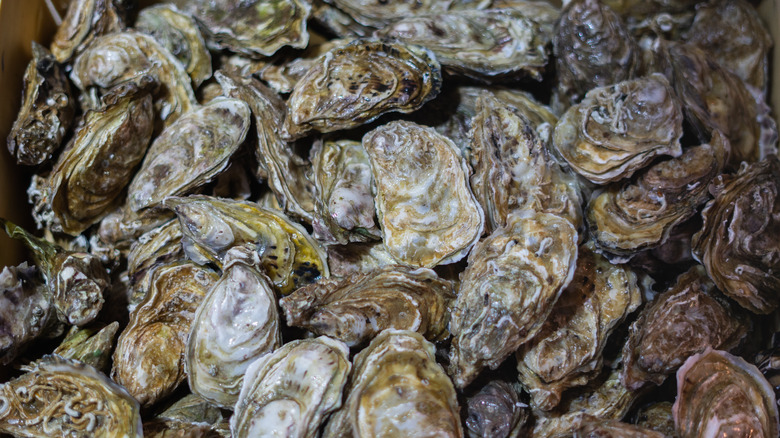What Is Merroir And Can You Actually Taste It?
If you've ventured into the world of oysters, you've probably noticed that no two are quite the same. Regardless of the species, however, each bivalve will express certain features characteristic of their environment. It's not unlike the sense of place that is described with the tastes of different wines, a term known as terroir (via Vinepair). Using that as inspiration, in 2003, The Seattle Times journalist Greg Atkinson and a fellow bivalve lover were so in love with the unique flavors of Pacific Ocean oysters, they invented the word merroir to describe them. Like terroir, merroir takes the notion of a sense of place, but moves it underwater, adjusting the term to incorporate the French word for sea, "mer."
Oysters XO further explains that all oysters are filter feeders and, as a result, they will taste like what they eat. As well, Element Seafood explains that sea water, currents, tides, temperature, algae, rainfall, season, and location are all responsible for the nuanced flavors you taste in each bivalve. These ever-changing characteristics all make up the idea of merroir, and explain why the same type of oyster can taste different throughout different times of the year.
Oysters XO remarks, too, that oysters sourced from the two oceans vary widely due to aspects of merroir. The source explains that cold Atlantic waters lend crisp sweet flavors to East Coast oysters, whereas Pacific West Coast bivalves tend towards intensity with notes of cucumber and fish. Texturally, the two coasts also diverge, as international oyster expert Julie Qiu explains on her blog In a Half Shell. As she says, East Coast oysters are usually firm to silky compared to the creamy, custard-like consistency to be found with catches from the West Coast.
How does merroir vary and can you actually taste it?
While it may be more obvious to notice the distinction between an East Coast or West Coast oyster, blogger Julie Qiu suggests trying different oysters from the same region to notice the influence of merroir (via In a Half Shell). Unfortunately, a 2019 study published in the journal Sustainability noted that climate change is causing a shift in characteristics often attributed to merroir, which will entail different flavors over time.
Much like grapes from one region can be grown successfully to make wine across the globe, oysters from one area can also do well in a new environment (via Cigar Aficionado). All the same, distinct features will be perceived depending on where the oyster lives. The Houston Press even indicates that transferring oysters to another reef to finish them was not uncommon in Texas and France over a century ago. The newspaper describes that, depending on the reef, it can cause oysters to be briny, sweet, creamy, or fatty. Aside from texture and flavor, size is also largely dependent on the temperature and nutrients in the water, and the newspaper further remarks that full growth can take from 18 months to five years.
Of course, if you're dousing your oysters in Tabasco hot sauce or topping them with cheese and broiling them, then you probably won't taste the distinct nuances of merroir. Qiu loves eating pure oysters to savor the taste, but agrees that toppings in moderation can also complement the natural flavors.

